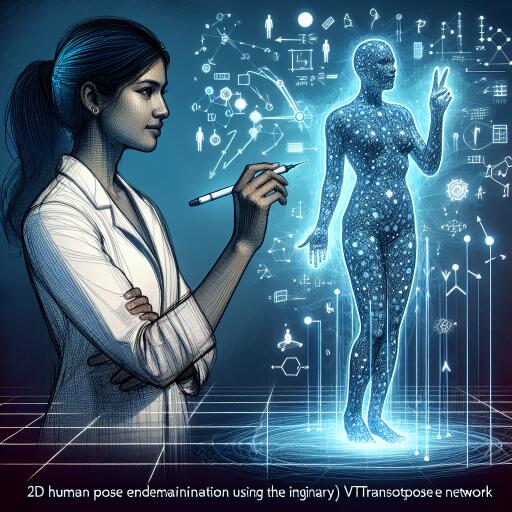An Innovative Leap in 2D Human Pose Estimation: The VTTransPose Network
In the advancing field of computer vision, the quest for a high-performing 2D human pose estimation technique has led to a pivotal development: the VTTransPose network. This cutting-edge method, detailed in the journal Scientific Reports, signifies a profound stride towards addressing the inherent challenges faced by transformer-based pose estimation algorithms. While these algorithms have been lauded for their impressive performance and streamlined parameterization, they traditionally grapple with high computational demands and a lack of sensitivity to local details.
The Genesis of VTTransPose
At the heart of the TransPose network was the introduction of the Twin attention module, designed to enhance model efficiency and pare down resource consumption. Building on this, VTTransPose emerges by integrating an intra-level feature fusion module, dubbed the V block, into the third subnet to replace the basic block. This innovation targets the critical issues of insufficient joint feature representation and subpar network recognition performance, setting a new benchmark for accuracy and efficiency.
Validation and Results
VTTransPose’s prowess was rigorously validated against the public datasets COCO val2017 and COCO test-dev2017. The outcomes were telling: VTTransPose achieved AP (average precision) scores of 76.5 and 73.6 respectively, edging out the original TransPose network by margins of 0.4 and 0.2. Perhaps more impressively, it boasted a significant reduction in FLOPs (4.8G), parameter count (2M), and memory usage during training (about 40%) when compared to its predecessor. These results unequivocally underscore VTTransPose as not only more accurate but also as a more resource-efficient model.
The Landscape of 2D Human Pose Estimation
Understanding human postures from visual data, otherwise known as human pose estimation, stands as a formidable challenge within computer vision. This discipline is primarily bifurcated into 2D and 3D pose estimation, with 2D algorithms focusing on identifying human keypoints from images. The accuracy of these keypoint correspondences is paramount, directly influencing the estimation results.
Traditional methods, while pioneering, often fell short of delivering satisfactory outcomes, propelling researchers towards leveraging deep learning for enhanced accuracy. CNNs particularly revolutionized this space, offering the capacity to extract nuanced features essential for precise human pose estimation. Innovations like the Cascaded Pyramid Network and HRNet made significant strides in addressing body occlusions and the variability of human joint scales, respectively.
Nevertheless, the advent of transformer architecture heralded a new era. Originating from natural language processing, transformers introduced a computationally efficient means to capture the global context of image features, spurring the development of hybrid CNN-transformer networks like TransPose. These models combined the local feature articulation prowess of CNNs with the global feature modeling of transformers, arranging for a potent solution to pose estimation.
Introducing VTTransPose
Despite these advancements, computational inefficiency and inadequate joint feature representation persisted. VTTransPose addresses these challenges head-on. By integrating twin attention from SOTR into TransPose and introducing the V block for enhanced local feature representation, the model considerably reduces memory consumption and amplifies joint feature depiction. These refinements culminate in a superior algorithm that sets new standards in 2D human pose estimation.
Conclusion and Future Directions
The VTTransPose model represents a significant leap forward in the realm of 2D human pose estimation. Not only does it showcase a notable improvement in accuracy and efficiency over its TransPose lineage, but it also stands competitively among other state-of-the-art methods. Looking ahead, the journey of refining human pose estimation algorithms continues, with VTTransPose laying a robust foundation for future explorations aimed at further enhancing model performance and applicability in real-world scenarios.
As we advance, the implications of such technological strides extend far beyond the academic and into practical applications, from enhanced interactive interfaces to more nuanced human-computer interaction protocols. The journey of VTTransPose is just beginning, but its impact promises to be far-reaching, influencing both the trajectory of computer vision research and its application across diverse domains.










